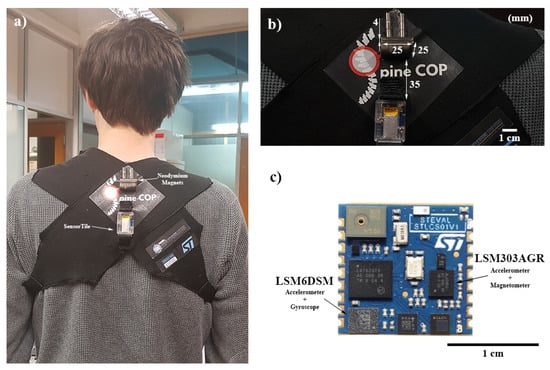

As our reliance on digital devices increases, poor posture, especially Forward Head Posture (FHP), has become a significant health concern.
Characterized by the head jutting forward beyond its natural alignment with the spine, FHP is a consequence of prolonged screen time and improper ergonomic setups.
Fortunately, technology has come to the rescue, offering advanced methods for detecting and correcting FHP in real time. Among the most promising developments are systems that combine 3D pose estimation with machine learning, specifically leveraging graph convolutional networks to monitor posture and provide immediate feedback.
This article explores how these technologies are reshaping posture correction and prevention.
The Rise of Forward Head Posture
Forward head posture, often linked to long hours spent on computers, smartphones, and other digital devices, places excessive stress on the cervical spine.
In a neutral position, the head weighs approximately 10-14 pounds, but as it tilts forward, the stress on the neck increases significantly.
A forward tilt of 60 degrees can exert up to 60 pounds of force on the cervical spine, leading to chronic pain, muscle tension, and long-term spinal damage.
FHP has been associated with several health issues, including neck pain, headaches, and shoulder discomfort, as well as more severe consequences like reduced lung capacity, poor balance, and even cognitive difficulties.
Enter 3D Pose Estimation and Machine Learning
One of the most innovative solutions for monitoring and correcting FHP comes from the field of 3D pose estimation.
Traditional methods for diagnosing posture issues have relied on clinical evaluations or specialized equipment like X-rays, but these are impractical for everyday use. Advanced 3D pose estimation offers a new way to assess posture without the need for such invasive measures.
A 2024 study published in JMIR Formative Research developed a system that uses 2D and 3D image inputs combined with a graph convolutional network (GCN) to detect FHP with high accuracy.
By analyzing key anatomical points such as the neck, shoulders, and spine, the system can identify deviations from a neutral posture and provide corrective feedback.
How Graph Convolutional Networks (GCNs) Work in Posture Detection
Graph convolutional networks are a subset of machine learning algorithms designed to analyze the spatial relationships between points in a network.
In the context of posture correction, GCNs evaluate the alignment of various points on the body, such as the head, shoulders, and spine, to determine whether they align with ideal postural standards.
The system developed by researchers at JMIR Formative Research demonstrated that the GCN model could identify FHP with 77% accuracy, outperforming other models like feedforward neural networks.
This system provides real-time feedback, enabling users to adjust their posture immediately, thus reducing the strain on their neck and shoulders.
The 3D pose estimation system can be integrated into various devices, including mobile phones and fitness trackers, making it easily accessible for daily use.
Real-Time Posture Correction: A Game-Changer
What sets this system apart from traditional posture assessments is its ability to provide real-time feedback.
Most posture monitoring systems require periodic assessments in a clinical setting, but the advent of 3D pose estimation combined with GCN allows for continuous monitoring.
This capability is especially important because poor posture often develops gradually over time, and real-time feedback can help users make minor adjustments before long-term damage occurs.
For instance, if a user’s head tilts forward beyond a certain threshold, the system can trigger a gentle reminder, prompting them to correct their posture.
Over time, these corrections help reinforce healthy posture habits, preventing chronic issues related to FHP(
The Benefits of Real-Time Feedback
Real-time feedback can prevent the long-term effects of poor posture, such as neck pain, muscle strain, and even spinal misalignment.
A 2024 study confirmed that consistent posture correction can significantly reduce the occurrence of chronic neck pain associated with FHP.
Applications of Posture Monitoring Technology
The potential applications for this technology are vast. For individuals who spend long hours at a desk, posture monitoring can be integrated into workplace setups to ensure employees maintain proper alignment throughout the day.
Gamified posture correction apps are also gaining traction, making the process of maintaining good posture both engaging and interactive.
Additionally, athletes can use these systems to ensure their posture during training or performance is optimal, thus reducing the risk of injury.
Even elderly populations, who are at higher risk of developing posture-related issues, can benefit from real-time monitoring, helping them maintain balance and prevent falls
The Future of Posture Monitoring Technology
While the technology is still in its early stages, the results are promising. The development of AI-powered posture correction systems like the one designed by JMIR Formative Research demonstrates the potential for widespread adoption.
However, challenges remain, including improving accuracy and ensuring the system can be easily integrated into existing devices.
Future developments in wearable technology may further enhance the capabilities of posture monitoring systems.
For example, combining 3D pose estimation with wearable sensors could improve the precision of real-time posture assessments, offering even more accurate corrections.
Moreover, as machine learning algorithms evolve, they may be able to detect more subtle variations in posture and provide more tailored feedback.
The ultimate goal is to create systems that not only correct posture but also educate users on how to maintain healthy habits, leading to long-term improvements in their physical well-being.
Conclusion
Posture monitoring and correction technology represent a significant advancement in the battle against Forward Head Posture.
By leveraging 3D pose estimation and machine learning, researchers have developed systems that provide real-time feedback, making it easier than ever to maintain proper posture throughout the day.
This technology has the potential to prevent the long-term consequences of poor posture, including chronic pain and spinal issues.
As these systems continue to improve, they could become a standard tool in maintaining both physical health and ergonomic safety in everyday life.
References